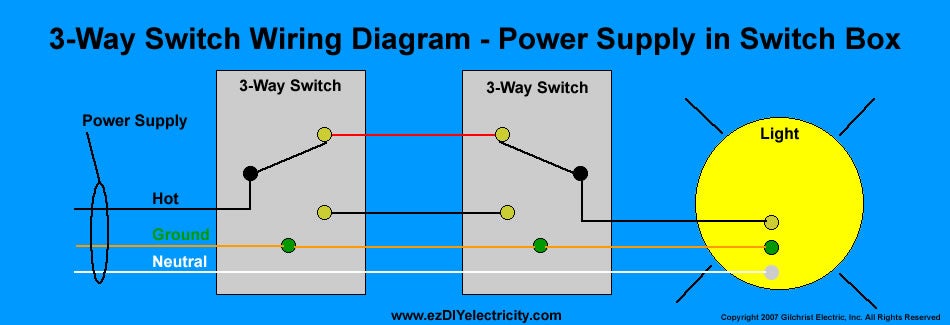Yes, that was my assumption... that the primary switch will be tapped INTO the the existing neutral line that goes to the fixture.I believe that your edited version is correct, with one clarification:
In the switch 2 location, neutral should be wired BOTH to the white switch wire (as you state) AND to the white wire from the fixture (load). I am guessing that you understood this already, and that this is what you meant by the last two lines of your post:
This is also based on the assumption that your wiring is consistent with the DIYChatroom forum post and that red/white wire of the aux switch is for supply power (inconsistent with instructions).
BTW...I believe that was a wise to require neutrals at every box. If your electrician followed that requirement, you should have no troubles adding home automation switches to your house.
From the limited testing I can do by finding the line voltage, and seeing how the existing three ways are connected AT THE BOX... (as well as my request to the electricians to always ensure the fixture is the last link in any 3/4-way chain), I think that's the correct wiring - assuming they followed my instructions. (I was originally going to do ALC lighting until all that fell through). Anyway,by looking at the instructions in the PDF, and looking at the wiring diagram (which is misspelled in the installation instructions as "digram") as well as the picture of the aux switch "45610", the red and white striped wire should tap into Line Hot.
Anyway -I'm going to give this a go tomorrow... I'll try and report back.
I'm happy to have additional sets of eyes take a look to see if my assumptions look accurate
Thanks!


